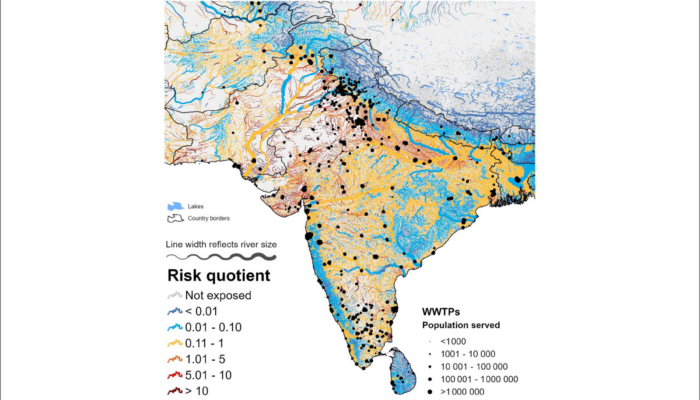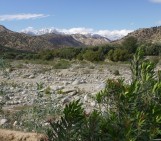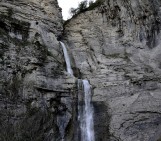
Ever wonder what happens to the chemicals and medications we use once they go down the drain? The fourth Sunday of September each year marks the World Rivers Day, and this post is dedicated to our global rivers and what humankind can do to preserve our waters. This is because pharmaceuticals and household products, even after being flushed or washed away, don’t just disappear. Many of these substances slip through wastewater treatment systems and end up in our rivers and lakes, posing risks to aquatic life and potentially our health. In this blog post, I introduce you to HydroFATE, a cutting-edge model, recently published by our journal Geoscientific Model Development (GMD), designed to track the journey of these contaminants in surface waters worldwide.
Curious about how this works and why it matters? Keep reading!
Contaminants of emerging concern (CECs), such as pharmaceuticals and household chemicals, pose significant risks to the global water system. These substances, which include analgesics, antibiotics, and hormones, are not fully metabolized by humans and can pass through wastewater treatment plants (WWTPs) into aquatic environments. Since most WWTPs are not designed to filter out these pollutants, they can become concentrated sources of contamination in rivers, lakes, and oceans. It’s also important to note that populations that are not connected to sewage systems contribute additional diffuse sources of pollution, especially in areas with limited sanitation infrastructure.
This widespread release of CECs into our water systems is concerning because their effects on ecosystems and human health are often unknown or poorly understood. This is due to the lack of consistent monitoring and insufficient data to assess the full extent of contamination, which makes regulatory oversight and effective pollution control challenging. Unfortunately, current models designed to track CECs often struggle with incomplete data and limited spatial coverage.
To address this, HydroFATE has been developed as a comprehensive contaminant fate model. Unlike previous models, HydroFATE operates at a global scale and integrates detailed data on WWTPs and population sources. It predicts the distribution of pollutants in rivers, accounting for both point sources like WWTPs and diffuse sources from untreated wastewater. This model is a critical tool for identifying pollution hotspots, understanding regional trends, and supporting the development of regulations to protect water resources. HydroFATE was tested using the antibiotic sulfamethoxazole (SMX), showing its potential to match real-world contaminant levels with high accuracy, making it invaluable for global water quality assessments where data is scarce.
About our global water network and the significance of the “Hydro” databases:
In the HydroFATE model, the authors utilized data from the HydroSHEDS database to map out rivers and lakes on a global scale. This information is derived from detailed elevation data collected by NASA. They employed a version called RiverATLAS, which focuses on rivers and streams that are significant in size—either flowing more than 100 liters per second or draining areas larger than 10 square kilometers.
The resulting global river network includes over 8.4 million river segments, with an average length of 4.2 kilometers, totaling nearly 36 million kilometers of rivers. Each river segment is linked to its surrounding land area, which averages about 15.7 square kilometers. To understand river flow, the authors analyzed long-term average discharge data from 1971 to 2000, using estimates from a global hydrology model. They also examined the lowest monthly flow levels to assess low-water conditions.
But wait, there’s more! For lakes, they brought in data from HydroLAKES, which tracks about 1.4 million lakes that are at least 10 hectares in size. These lakes are seamlessly linked to the river data through designated entry points, creating a comprehensive aquatic network that’s as interconnected as the best water cooler gossip!
Another database HydroFATE uses is HydroWASTE, which the authors used to gather information about wastewater treatment plants (WWTPs) worldwide. This database includes details on over 58,500 WWTPs, such as where they are located, how much wastewater they treat, and the type of treatment they provide—ranging from basic solids removal to advanced filtration processes. For smaller treatment systems like septic tanks, HydroFATE uses country-level sanitation data to estimate their contributions. It also incorporates global population data from the WorldPop dataset and urban area information from the Global Human Settlement database, both updated to match the model’s resolution for accurate calculations.
HydroFATE’s ABC’s and the authors’ methodology:
To explain the methodology that the authors used in their research using HydroFATE, I simplify below their work and the steps they took:
A is for assessing contaminants
HydroFATE is like a detective for water pollution. It starts by figuring out where contaminants come from, based on how many people live nearby and how much they use. Think of it as counting the number of people at a party to see how many drinks you’ll need!
B is for building pathways
Next, HydroFATE builds pathways to show how these contaminants travel to rivers. It looks at various wastewater treatment options—like regular trash versus recycling—for household waste. Some places have fancy treatment plants (WWTPs) that clean up well, while others might just have a basic setup or none at all.
C is for calculating the journey
Once contaminants are on the move, HydroFATE tracks their journey through rivers and lakes. It uses a plug-flow method, like a conga line, where all the contaminants from different sources join in and flow downstream together. It even considers how contaminants break down along the way, like how food gets digested for instance.
D is for decay and detour
As contaminants travel, some get washed away or broken down by natural processes—think of it as them getting lost or taking a different route. HydroFATE measures how quickly this happens in rivers and lakes and accounts for how much cleaner the water becomes as it flows.
E is for environmental concentration
Finally, HydroFATE figures out how concentrated the contaminants are at different points in the river. It takes the total amount of contaminants and divides it by the water flow, which gives us a clear picture of what’s in our rivers.
Is HydroFATE a perfect model?
While HydroFATE cleverly distinguishing between treated and untreated wastewater, it faces significant challenges:
- The oversimplification of how contaminants decay
- Struggles with seasonal river changes
- A lack of specific data on pollution sources especially from veterinary and industrial sectors.
While it estimates that circa 214,000 kg of sulfamethoxazole enters rivers each year, the model’s reliance on average data means predictions can vary widely. Plus, uncertainties in field measurements make it tough to assess accuracy fully. Thus, while HydroFATE is a great start for identifying pollution hotspots, its predictions may not always hit the mark without better data and refined methods.




